Wearing appropriate motorcycle clothing is an essential secondary safety measure which helps to protect your head, hands, feet and body in the event of an accident. Naturally, secondary safety comes into play when primary safety – the process of avoiding an accident in the first place – fails.
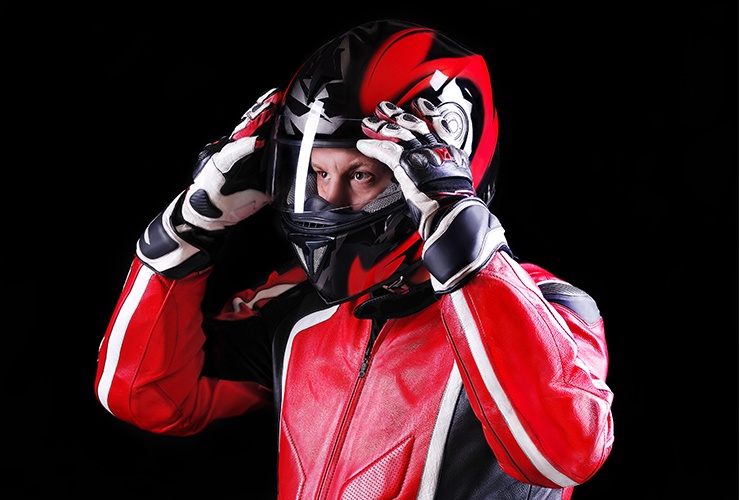
Motorcyclists do not enjoy the vast secondary safety measures found in cars, which cocoon their occupants and can prevent injury and death – even in serious incidents. It is therefore crucial that motorcyclists observe high primary safety standards (i.e. that their bike is well maintained and they are alert to the various hazards) and that they wear clothing that offers the maximum level of protection.
Choosing the right clothing and equipment requires careful research.
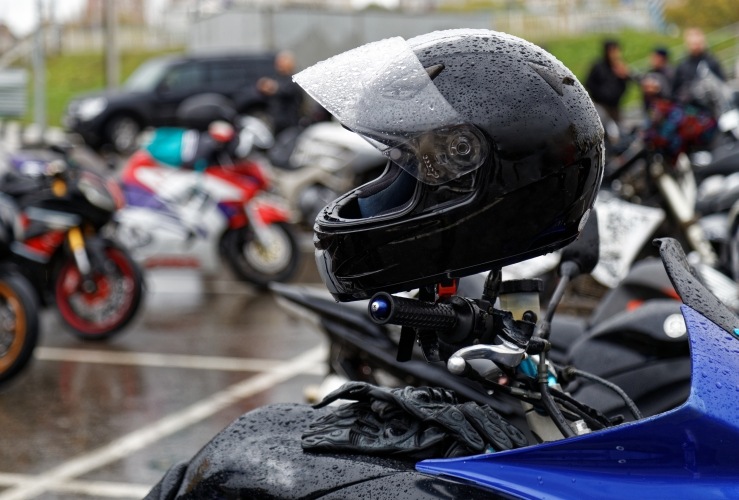
The head is of course the most vulnerable part of the body, since it may not be able to recover from a serious injury in the way that a leg or an arm can. Your helmet, therefore, is arguably the most important piece of safety kit you will own.
Your helmet should fit snugly around your head. When shaking your head the helmet should not wobble. Helmets sold in the UK should meet either the ECE 22.05 technical prescription or British Standard 6658: 1985.
The UK Government also assesses new helmets using the SHARP safety rating. This gives a rating of one to five stars and is a good way to identify safe helmets which don’t necessarily cost a lot of money.
A helmet consists of a hard outer shell which should not break in the event of an impact. Underneath is a layer of material that is designed to absorb the shock of any impact.
More expensive helmets tend to have outer shells made of fibre glass composites, often including Dyneema, Aramide, Kevlar and carbon fibres.
Heavier helmets may increase the chances of a broken neck, so if you've selected two possible helmets that satisfy your safety requirements, eliminate the heavier one.
Your helmet should feature a visor. If it doesn’t, you should wear goggles or safety glasses.
Most helmets on the market are either full-face, jet or cross style. The full-face style is generally considered safer than the jet, but a jet style helmet won’t fog up the way a full-face can.
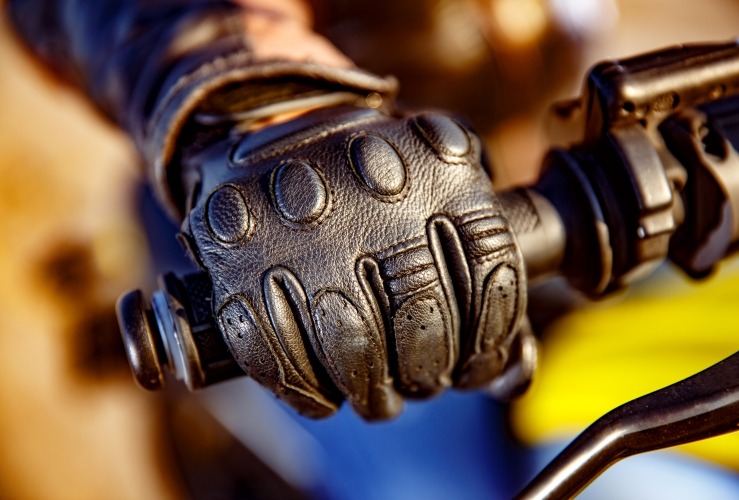
If you have an accident, the chances are that you'll put your hands out to break your fall. Hand injuries are therefore common. Road tarmac coming into contact with bare hands at speed could result in a serious injury.
Such an essential body part deserves the protection of a high quality pair of gloves. You should be able to feel the handlebars but your hands should not slip. Leather-palmed gloves are good in warm weather, while insulated, waterproof gloves are better in colder months. Make sure the cuffs extend past your wrist to prevent your hands getting wet.
You might also buy a pair of inner gloves for additional warmth.
Make sure your gloves and any linings fit snugly so they don't come off during an accident.
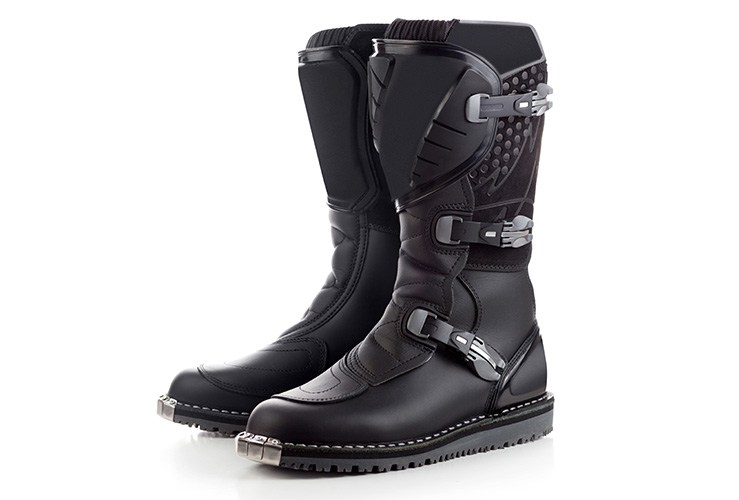
According to Think.Direct.Gov, 19% of hospital admissions following motorcycle accidents involve injuries to the lower leg area. Boots are therefore essential safety wear.
Feet often get crushed sideways, so it is crucial that the boots’ soles are very sturdy and well bonded/stitched to the boot. A thick sole of at least 4mm will help to absorb vibrations from the bike. Above the sole, high quality leather material with a thickness of at least 2.5mm is recommended.
It is not advisable to wear boots with steel toe caps, because while they may offer some additional protection, they can also cut into your toes should you have an accident.
Make sure your boots fit snugly. If they are too tight however, your toes may become numb. Too loose, on the other hand, and you will have less control on brakes and gear lever.
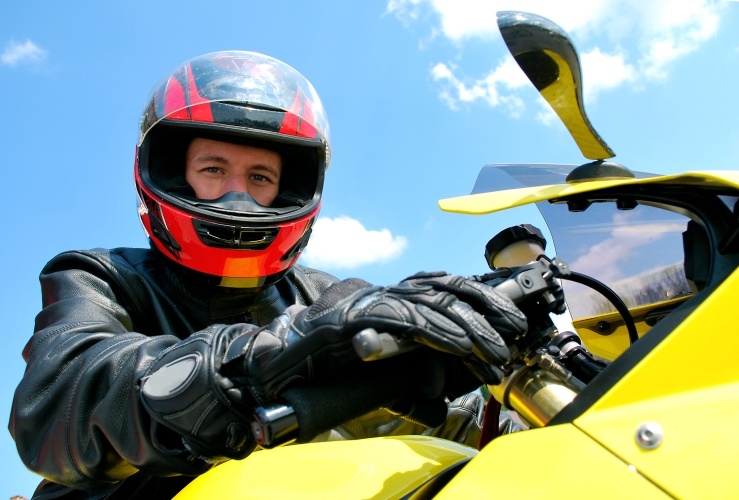
Leathers should:
Fit you well – your arms and shoulders should have enough room to move.
Feature double or triple stitching – as well as a plastic coating or a leather overlap to keep moisture out.
Feature body armour – at the elbows, shoulders, knees and hips.
Feature covered zips – which do not make direct contact with your skin. If a zip touches the skin, it may cause additional injuries in the event of an accident.
Thick, waterproof leather – with a thickness of at least 1.2mm. Kangaroo leather is especially durable.
If you're vegan, vegetarian or you just don’t like leather, there are alternatives such as Cordura, a highly waterproof material. The inner linings of synthetic garments can often be removed for riding in warmer months.
It’s a good idea to carry a waterproof overcoat just in case you encounter a sudden shower – entirely possible during the British summer!
Back protector – offers additional protection for the back in the event of an accident.
Base layer – a thin thermal garment that offers extra protection from the cold.
The European Personal Protective Equipment (PPE) Directive 1989 covers any products designed to protect people from injuries. Look for the CE mark on any clothing or equipment you buy.
Make sure any product fits you properly before you part with your cash. Ideally, wear them while sitting on your motorbike to ensure they behave as expected and provide real comfort.
Download our pdf checklist: Motorcycle clothing and equipment - a complete guide




